|
Di seguito gli interventi pubblicati in questa sezione, in ordine cronologico.
Cannabinoids are a class of chemicals found in marijuana. They’re also the main ingredients in cannabis-based treatments for multiple sclerosis (MS), such as Sativex.
But so far, cannabinoids are only recognized for their ability to manage symptoms of the disorder, according to U.S. researcher Yumin Zhang, MD, Ph.D, who also points to their psychoactive effects as a major drawback.
The THC compound is certainly already being used in Canada and several European countries. They have some effects in pain and spasticity. But for these exogenous cannabinoids, there is always concern about the side effect.
As a result, scientists like Dr. Zhang have begun to investigate a variety of synthetic cannabinoids – hoping to mimic the protective effects of marijuana-derived compounds while reducing their psychoactivity.
But studies continue to suggest that this may be a difficult goal to achieve.
Published online in the journal Neuroscience, Dr. Zhang and colleagues from the Uniformed Services University of the Health Sciences decided to further clarify the different roles of cannabinoid pathways in a mouse model of MS.
While CB1 receptors are responsible for the high associated with marijuana, CB2 receptors have no psychoactive effect and are thus the primary focus of new cannabinoid therapies.
But like many before, the study concluded that it was CB1 activity, not CB2, that “contributes significantly to the anti-inflammatory and neuroprotective effects of cannabinoids in MS.”
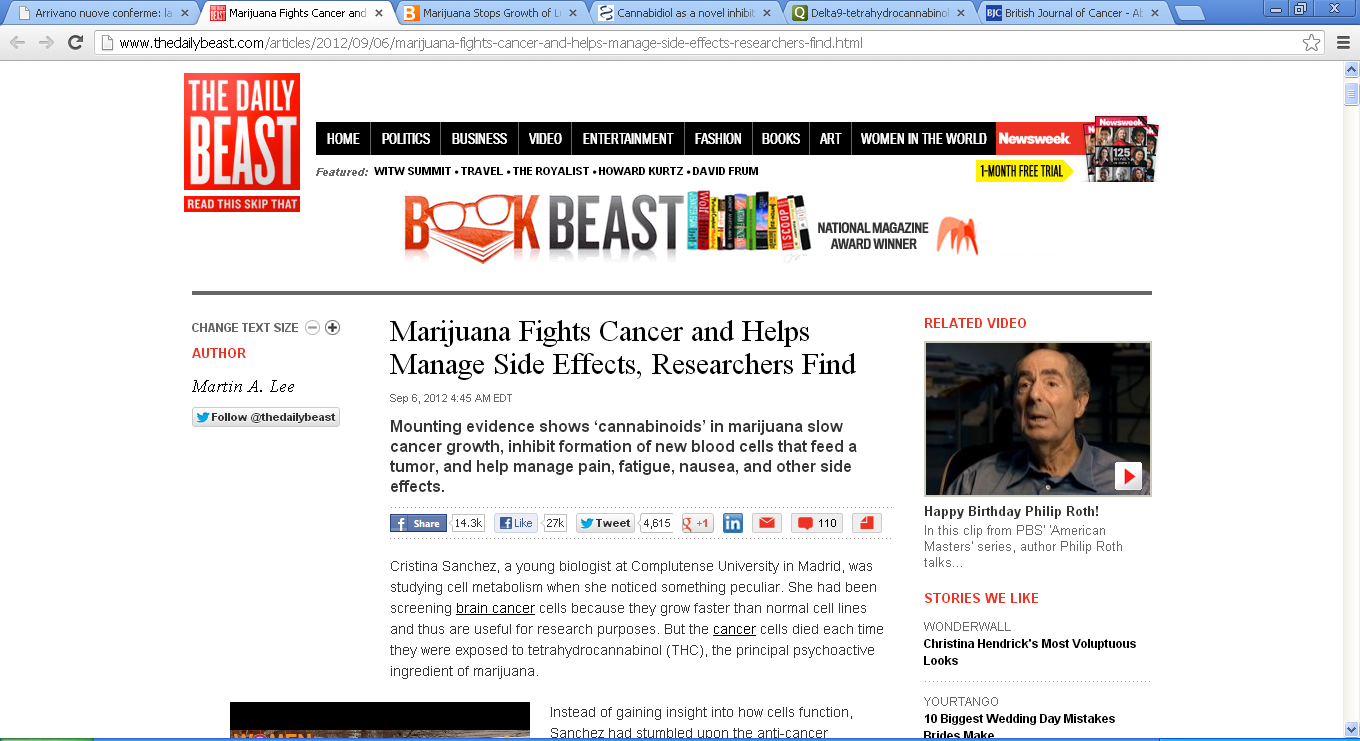
Indeed, the potential for cannabinoids to protect neurons from MS-related damage has inspired hope for treatments that can cure, or at least slow, the degenerative disorder.
Dr. Zhang says some synthetics like CB52 – one of the cannabinoids used in the latest study – have shown promising results in early stage research. However, it is difficult to distinguish its therapeutic effect from its potential side effects, because CB52 acts on both CB1 and CB2 receptors.
Using this compound, we found that in in vitro studies, certainly they have a better effect compared to other compounds. That’s one of the reasons why we use this. But I still don’t know the potential for this particular drug to be used in clinical studies. I think any drug, if used at a certain high dose, always has a side effect.
After conducting a number of studies involving cannabinoids and MS models, Dr. Zhang concedes that it may be more ideal to target both CB1 and CB2 receptors instead of only CB2.
But he hopes that new drugs can improve on the effectiveness of traditional cannabinoids.
“I still think that maybe both CB1 and CB2 receptor activation should be more ideal,” Dr. Zhang says.
“The important thing is how to really enhance the protective effect and at the same time reduce the side effects. Augmentation of the endogenous levels of cannabinoids might be an alternative and a better approach for the treatment of MS, and possibly other neurological diseases.”
The study was published ahead of print and received funding from the National Multiple Sclerosis Society, the Defense Medical Research and Development Program and the Uniformed Services University
Source: LeafScience.com
Israel is one of the few countries that have legalized medical marijuana. Today, the country’s medical marijuana program includes 12,000 patients, up from less than 2,000 in 2008.

The secret to its growth seems to be research involving actual cannabis users, which is cutting-edge compared to most parts of the world. In the past year, researchers in Israel have published studies confirming the effectiveness of marijuana in treating Crohn’s and Parkinson’s disease.
This has made Israel a key location for international groups such as California-based Multidisciplinary Association for Psychedelic Studies (MAPS). While the organization’s interests span various psychedelic substances – including MDMA and mushrooms – MAPS’ work on marijuana inspires hope in the many who believe in its potential to treat post-traumatic stress disorder (PTSD).
One of these persons is Mimi Peleg – a clinical research associate with MAPS who worked on a study involving the use of cannabis as a treatment for 30 Israeli combat veterans. The study is currently being reviewed for publication, but showed “promising” results, Peleg told SALON in a recent interview.
We took 30 combat veterans with treatment-resistant PTSD and gave them cannabis over time, and did testing before, during and after.
Outside of research, Peleg also serves as the Director of Large Scale Training at the Medical Cannabis Distribution Center (MECHKAR) – a licensed marijuana supplier that serves thousands of patients from Israel’s Abarbanel Hospital.
She says despite the red tape involved with becoming a marijuana patient, there are currently about 200 patients in Israel approved to use cannabis for PTSD. And that number is on the rise.
Continue to read on LeafScience.com
Cancer scientists have recently turned their attention to a class of chemicals called cannabinoids. While marijuana is a well known source of cannabinoids – including THC and CBD – the body also produces some of its own.

The team, led by Barbara Adinolfi, Ph.D, a postdoctoral researcher at the University of Pisa’s Department of Pharmacy, conducted experiments using one of these natural cannabinoids, anandamide (AEA), and human melanoma cells.
Their findings, published online in the European Journal of Pharmacology, showed anandamide had a toxic effect on cancer cells – even in small doses.
Overall, these findings demonstrate that AEA (anandamide) induces cytotoxicity against human melanoma cells in the micromolar range of concentrations.
Interestingly, the role of endocannabinoids – ‘endo’ stands for endogenous (i.e. made by the body) – in controlling cancer is not a new discovery.
As the authors note, endocannabinoids have been shown to “regulate both core and emerging hallmarks of cancer.” Previous studies show that the body produces more endocannabinoids in cancer and pre-cancer states.
But very few groups have studied their action in the case of skin melanoma – one of the most aggressive human cancers, according to the authors. And while cannabinoids seem to have a general anticancer effect against many cancers, their mechanisms of action have not been consistently identified.
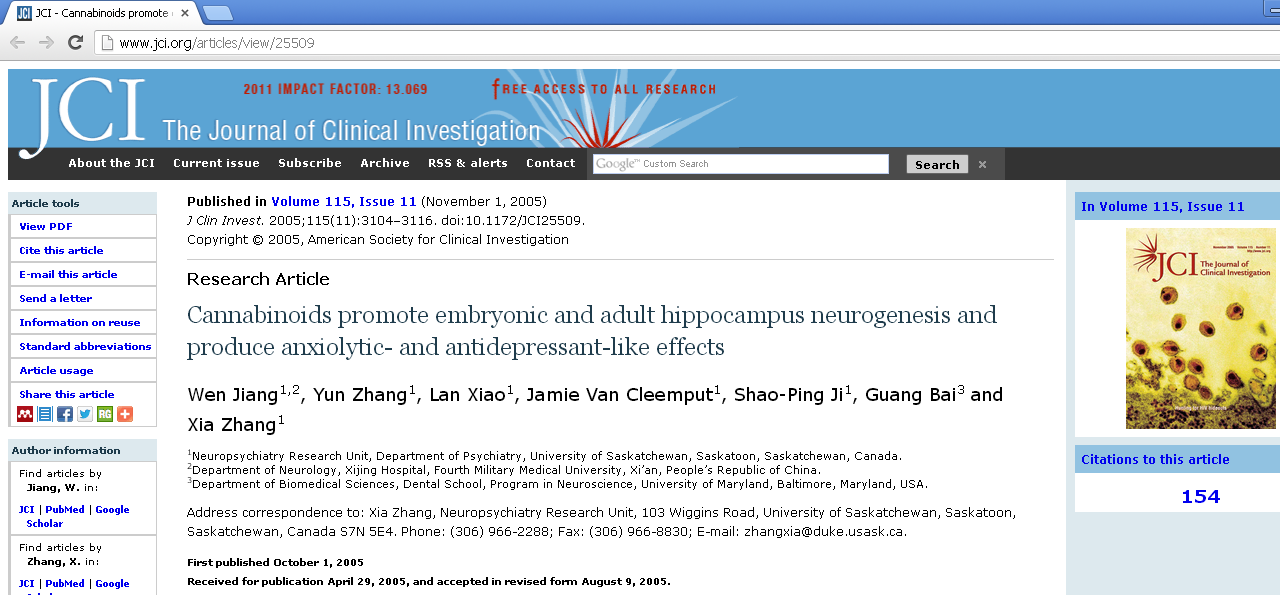
In vitro and in vivo studies have shown that natural and synthetic cannabinoids are efficacious in reducing cancer progression, although the observed effects are complex and sometimes contradictory.
In the latest study, the authors were able to pinpoint mechanisms involved with anandamide’s anticancer activity. Unsurprisingly, activation of pathways that facilitate the effects of marijuana, CB1 receptors, played a major part.
While more studies need to be done, cancer researchers have been looking at ways of increasing natural cannabinoid levels or delivering plant-derived cannabinoids to targeted areas as new cancer therapies.
Skin cancer is often treatable with surgery, but more aggressive forms can spread quickly and are known to be resistant to traditional chemotherapy.
The study was published ahead of print and received funding from the Italian Anti-melanoma Association
Source: LeafScience.com
Scientists found that pathways in the brain associated with marijuana (cannabinoid receptors) were also responsible for the effects of a chemical called minocycline.
The results were released last week in the Oxford journal Cerebral Cortex.
Our findings confirm that minocycline decreases brain damage caused by traumatic brain injury… the activation of cannabinoid receptors is required for the neuroprotective actions of this compound.
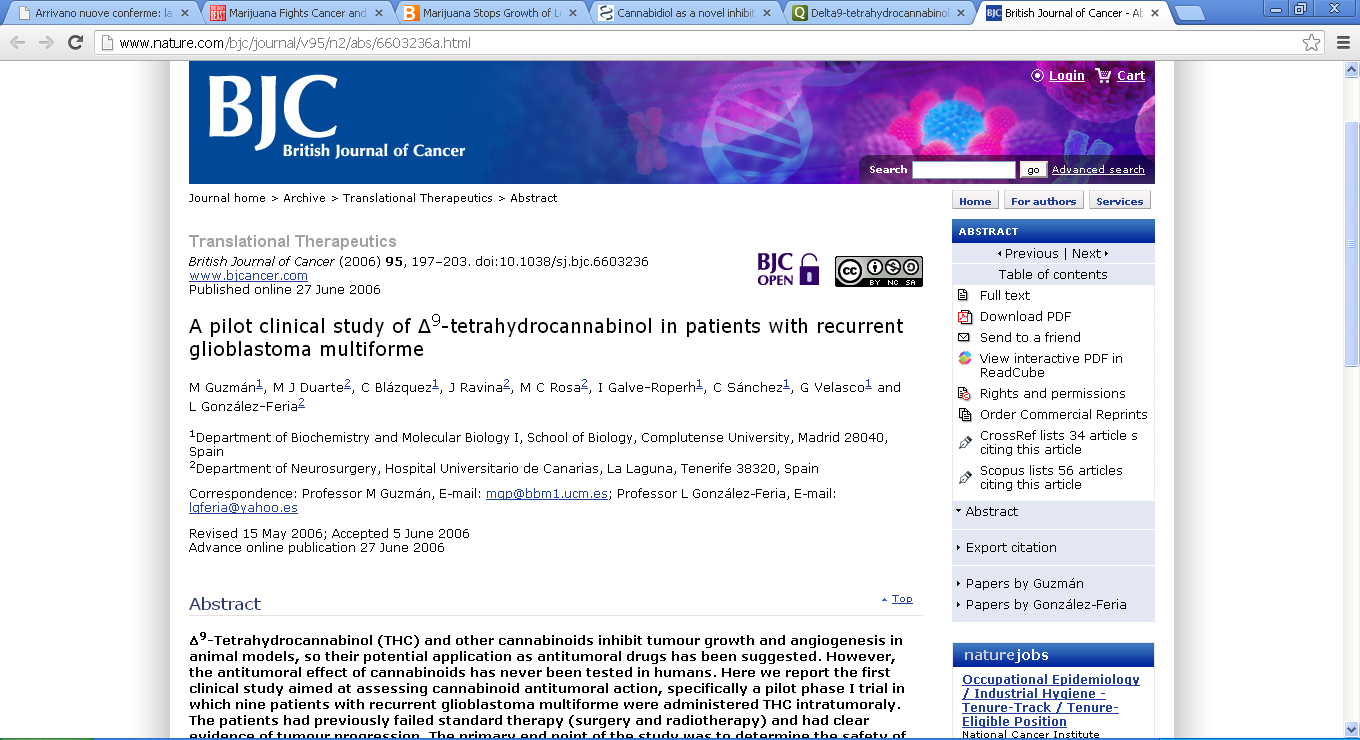
Inflammation is believed to contribute to brain damage that occurs after a head injury. Earlier studies show that minocycline can protect against this damage.
However, when researchers from the Complutense University of Madrid gave minocycline along with chemicals that block the activity of cannabinoid receptors, its protective effects were prevented.
Interestingly, other studies suggest that marijuana may play a direct role in protecting against brain damage – including research by Professor Yosef Sarne of Israel’s Tel Aviv University.
While still in its early stages, Prof. Sarne told Science Daily that the main chemical in marijuana, THC, showed incredible promise.
THC could be applicable to many cases of brain injury and be safer over time.
THC’s anti-oxidant and anti-inflammatory properties are thought to protect the brain from further damage following injury.
While THC is also responsible for the marijuana high, Prof. Sarne found it offered significant protection at doses 1,000 to 10,000 times less than that in an average marijuana joint.
The study was supported by GRUPOS UCM-BSCH 951579; Delegación del Gobierno para el Plan Nacional sobre Drogas; Instituto de Salud Carlos III; Redes temáticas de Investigación Cooperativa en salud, Red de Trastornos Adictivos; Ministerio de Economía y Competividad, Spain, and the nonprofitable organization Fondation des Gueules cassées.
Source: TruthOnPot.com
Every new revelation about the global reach of the National Security Agency underscores that the extremism of the surveillance state has reached gargantuan proportions. The Washington Post just reported that the NSA “is gathering nearly 5 billion records a day on the whereabouts of cellphones around the world.” Documents provided by whistleblower Edward Snowden have forced top officials in Washington to admit the indefensible while defending it. One of the main obstacles to further expansion of their Orwellian empire is real journalism.
Real journalism is “subversive” of deception that can’t stand the light of day. This is a huge problem for the Obama administration and the many surveillance-state flunkies of both parties in Congress. What they want is fake journalism, deferring to government storylines and respectful of authority even when it is illegitimate.

In motion now, on both sides of the Atlantic, are top-down efforts to quash real journalism when and how it matters most. In the two English-speaking countries that have done the most preaching to the world about “Western values” like freedom of the press, the governments led by President Obama and Prime Minister Cameron are overseeing assaults on real journalism.
They’re striving to further normalize fake journalism—largely confined to stenographic services for corporate power, war industries and surveillance agencies. A parallel goal is to harass, intimidate and destroy real journalism. The quest is to maximize the uninformed consent of the governed.
In direct contrast, those willing to fight for truly independent journalism—including whistleblowers, political activists and journalists themselves—are struggling to provide our world with vital light, fueled by comprehension that real journalism must be willing to challenge entrenched power.
From incessant war and arming the world, to climate change and coddling fossil fuel industries, to anti-democratic governance and enabling vast NSA surveillance, the U.S. power structure -- with epicenters along Wall Street and Pennsylvania Avenue -- continues to dominate. That power structure is a clear, present and horrendous threat to human survival, the natural world of this planet and the possibilities for authentic democracy.
Against such dire, highly institutionalized assaults on the present and the future, we desperately need a wide range of nonviolent, principled and unrelenting insurgencies. In that context, government efforts to crush real journalism can be understood as methodical counterinsurgency.
Smashing Guardian hard drives and hauling the newspaper’s editor in front of an inquisitional parliamentary committee are aspects of the British government’s counterinsurgency program against real journalism. In the United States, the counterinsurgency includes numerous prosecutions of whistleblowers and wide-ranging surveillance of journalists’ workaday communications. These assaults aren’t episodic. They’ve become routine.
Journalism is at a momentous crossroads. The alternative to unrelenting independence is sheepism, and that’s not journalism; it’s a professionalized baseline of bowing to government and corporate pressure even before it has been overtly exerted.
For journalists, and for the rest of us, silence is not neutrality; it ends up as acceptance of autocratic rule, a present festooned with pretty-sounding names like “anti-terrorism” and “national security.”
As the most powerful institutions run amuck, their main functionaries are “leaders” who keep leading us farther and farther away from a world we could possibly be proud of leaving for the next generations. Pushing back against the ominous momentum will require fighting for real journalism. No one can plausibly say that reversing course will be easy or probable—only imperative.
This work is licensed under a Creative Commons Attribution-Share Alike 3.0 License.
Source: commondreams.org - Author: Norman Solomon is co-founder of RootsAction.org and founding director of the Institute for Public Accuracy. His books include “War Made Easy: How Presidents and Pundits Keep Spinning Us to Death” and "Made Love, Got War: Close Encounters with America's Warfare State".
In 2008, Professor Giovanni Appendino and Professor Simon Gibbons showed that marijuana chemicals could be just as effective against drug-resistant MRSA strains as powerful prescription antibiotics.

The Centers for Disease Control and Prevention (CDC) released an alarming report that warned of "potentially catastrophic consequences" from the spread of antibiotic-resistant bacteria.
For the first time, the U.S. public health agency detailed the damage done by the widespread use of antibiotics. According to the 114-page report, each year more than two million Americans are infected with bacteria resistant to modern day treatments and at least 23,000 die as a result.
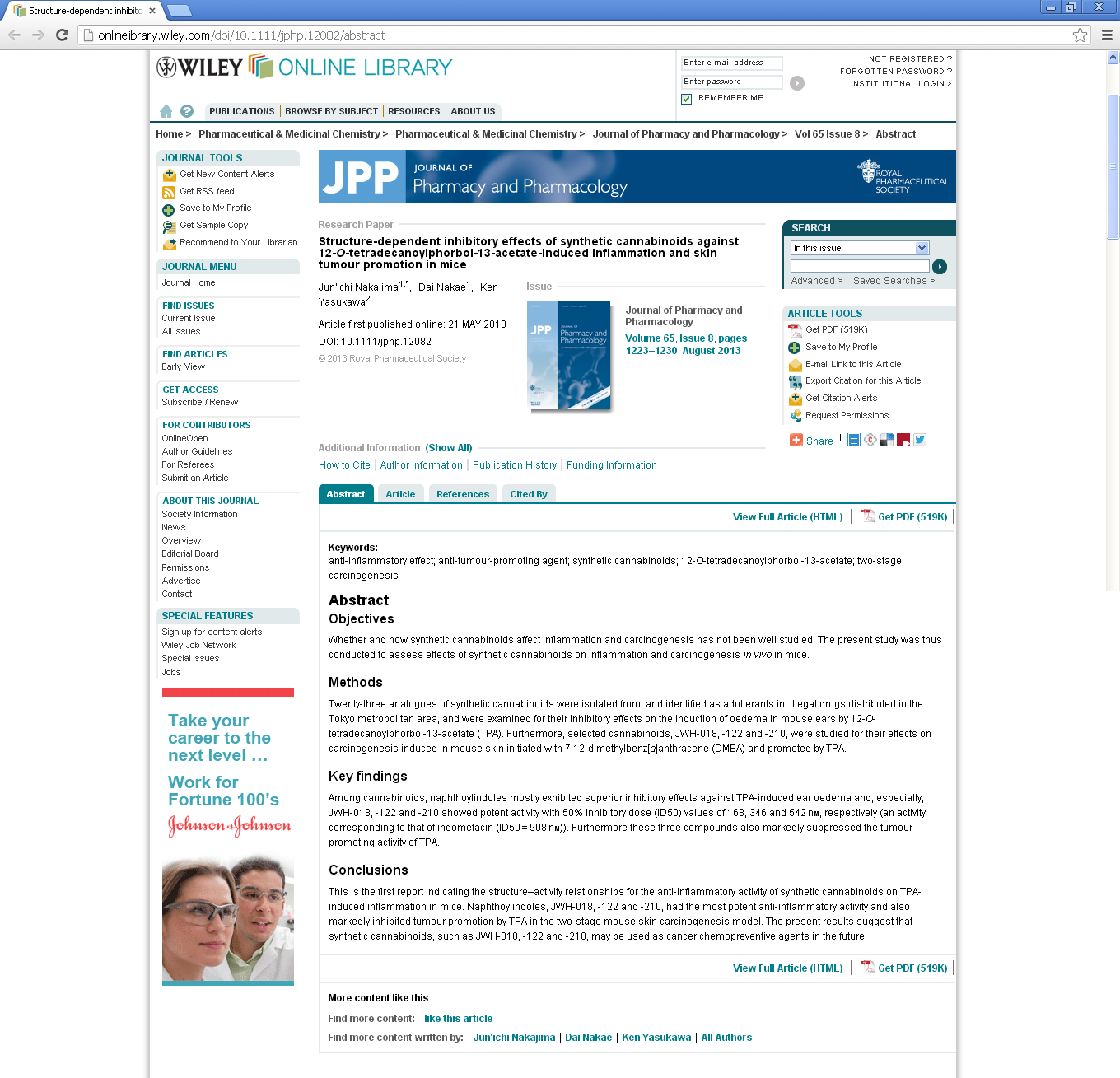
The problem is - while antibiotics are effective against weaker strains of bacteria - they create an environment for genetic mutant "superbugs" to survive and flourish.
Unfortunately, that means the single biggest factor in the rise of drug resistant bacteria is the use of antibiotics themselves.
CDC Director Tom Frieden sent a clear warning to the public on the overprescribing and overuse of antibiotics during last news conference.
"Antibiotic resistance is rising for many different pathogens that are threats to health. If we don't act now, our medicine cabinet will be empty and we won't have the antibiotics we need to save lives."
But what are the alternatives?
As it turns out, researchers like Professor Simon Gibbons, who heads the Department of Pharmaceutical and Biological Chemistry at the University College London School of Pharmacy, have been investigating the natural antibiotic effects of a variety of plants.
And one of the most promising of these plants happens to be cannabis.
In 2008, Prof. Gibbons and Prof. Giovanni Appendino of Italy's Piemonte Orientale University published a study that demonstrated the ability of various chemicals extracted from marijuana (called cannabinoids) to fight methicillin-resistant staph bacteria - one of the most serious and life-threatening sources of bacterial infections in the U.S.
When the scientists tested chemicals from marijuana on six different strains of methicillin-resistant Staphylococcus aureus (MRSA) - including strains that are known to be resistant to traditional MRSA treatments - they found that they were just as effective at killing the bacteria as commonly prescribed antibiotics.
In fact, cannabinoids were even as effective as vancomycin - a powerful drug that is only used when other antibiotics fail.
Prof. Gibbons explained the remarkable findings of his 2008 study in an interview with MIT's Technology Review.
"The cannabinoids even showed exceptional activity against the MRSA strain that makes extra amounts of the proteins that give the bugs resistance against many antibiotics... Everything points towards these compounds having been evolved by the plants as antimicrobial defenses that specifically target bacterial cells."
Prof. Appendino added that the most promising cannabinoids in their study - cannabidiol (CBD) and cannabigerol (CBG) - also happen to be non-psychoactive.
"What this means is, we could use fiber hemp plants that have no use as recreational drugs to cheaply and easily produce potent antibiotics."
While the findings are still considered early stage - antibiotic cannabis extracts have yet to be tested on animals (let alone humans) - similar research dates back to the 1950's, when cannabis was studied as a treatment for diseases like tuberculosis.
However, little was known about marijuana's active chemicals at the time, which may have prevented research from advancing.
With our current understanding of cannabinoids, Prof. Appendino believes there is much promise for cannabis derivatives with bacteria-fighting abilities to be used in hospital settings - where most MRSA infections are acquired.
"The most practical application of cannabinoids would be as topical agents to treat ulcers and wounds in a hospital environment, decreasing the burden of antibiotics."
According to the CDC's latest report, there were about 80,500 MRSA infections in U.S. hospitals in 2011.
Source: TruthOnPot.com and CDC and MIT Technology Review
The study, published online in the British Journal of Pharmacology, shows that chemicals in marijuana have the potential to stop harmful DNA activity that underlies diseases like skin cancer and allergies.

“Our findings may lead to the development of preventive medicines, for example aimed at controlling allergic reactions, or to the design of new and more effective treatments for skin cancer.”

Certain genetic factors are believed to play a role in the uncontrollable growth of skin cells – a key characteristic of many disorders.
But a class of chemicals produced by marijuana called cannabinoids appears to have an unique ability of switching them off.
“Plant-derived cannabinoids that are absent of psychoactive effects may be useful candidates for these applications.”
In the study, researchers recorded the effects of three cannabinoids – cannabidiol (CBD), cannabigerol (CBG) and cannabidivarin (CBV) – on human skin cell lines.
CBD was found to be the most effective at targeting unwanted DNA activity, followed by CBG.
While THC has also been suggested as an effective therapy for skin allergies, research is beginning to focus on compounds in marijuana that can’t get you high – which may be more appealing to patients.

The authors also conclude that the potential to switch off gene activity may “extend well-beyond skin disorders” to diseases like multiple sclerosis and other forms of cancer.
The study was published ahead of print and received funding from GW Pharmaceuticals
Source: TruthOnPot.com
The ethicist outlined his opinion on the hotly debated issue – which was recently addressed by New Jersey’s governor – in a column for NBC.
The N.J. bill, which allows prescriptions of edible medical marijuana for kids, is the absolutely right thing to do.
Dr. Caplan, who heads the Division of Bioethics at NYU Langone Medical Center, acknowledges that many kids “are getting relief” from medical marijuana and says that marijuana should be evaluated according to the same criteria as other treatment options.
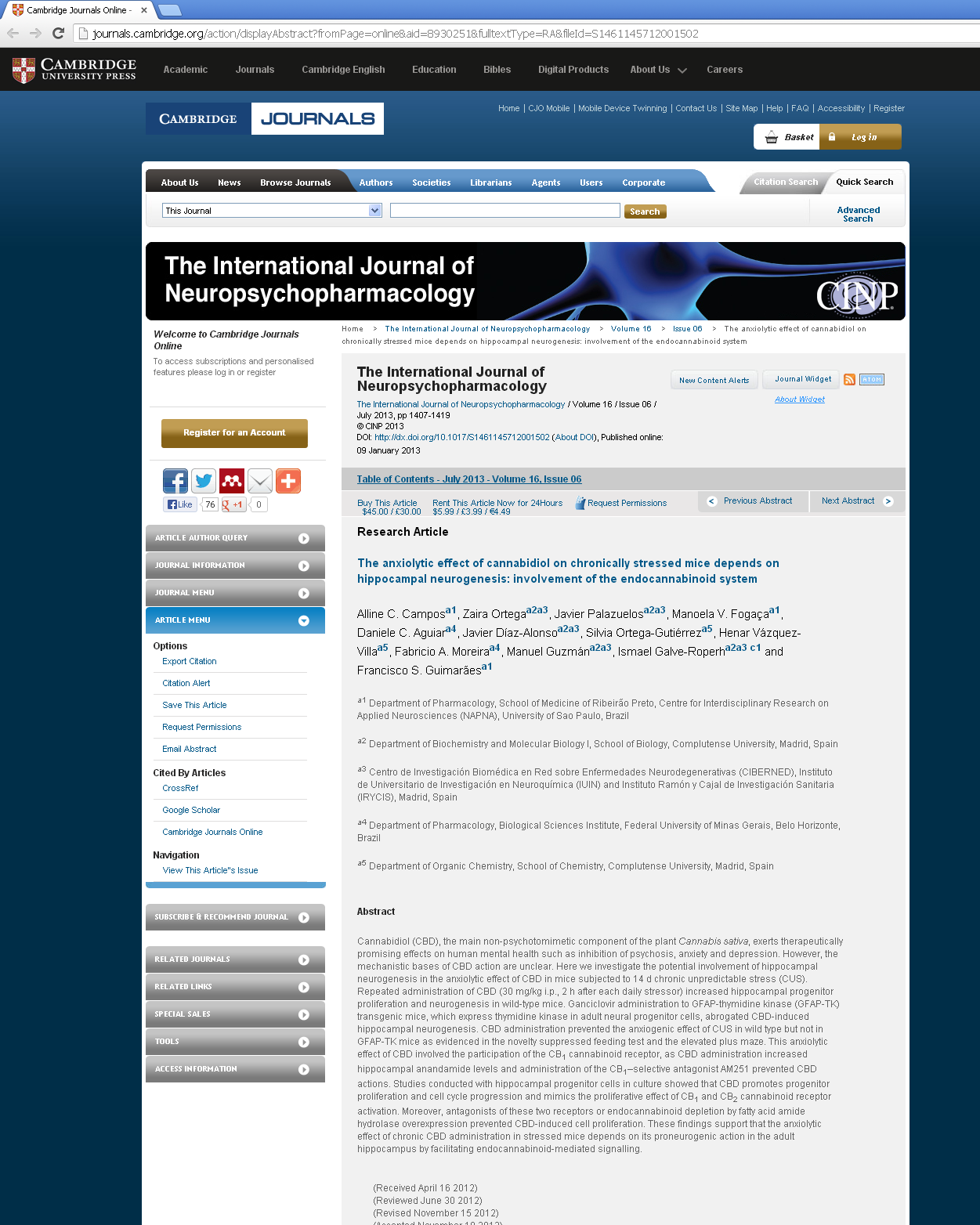
Taking the active ingredient of marijuana and giving it to a child is no different from giving the child any other potent and risky pill that is helpful… the bottom-line issue is: does it work, can it be monitored under medical supervision and is it made in a way that guarantees a uniform dose and quality?
But the controversy stemming from marijuana is rarely about whether it works or not. Scientists, policymakers and patients have all testified to the fact that marijuana is indeed an effective medicine.
Rather, some seem hesitant about giving children the same drug that many teens and adults smoke to get high.
As Caplan explains, marijuana doesn’t need to be smoked to work.
Before you get an image in your head of some little kid sitting on a corner smoking a joint, keep in mind the medicine is basically syrup containing the active ingredient[s] found in marijuana.
It doesn’t need to get you high either, since numerous chemicals in marijuana (besides THC) have been found to possess medical properties.
And although many in the medical community, including the American Academy of Pediatricians, argue that clinical trials have yet to be conducted – suggesting that there isn’t enough proof of its safety – Caplan asserts that “despite the possible risks, it ought to be available for doctors to prescribe to children.”
Many still sneer at the idea of ‘pot for tots.’ They are wrong. Carefully regulated it ought to be available to children for whom nothing else seems to work.
Source: TruthOnPot.com and NBC
The problem with chemicals in marijuana like THC and CBD is the fact that they are highly insoluble in water. So far, this has mostly restricted patients to smoking or eating the plant, which makes it difficult to target tumor cells without affecting other parts of the body as well.
However, using tiny particles of polycaprolactone (a biodegradable polymer) to encapsulate THC, researchers say they've developed a novel delivery system for THC that can be used to fight cancer.
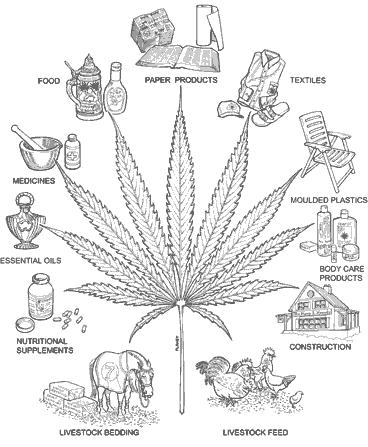
Writing in the Journal of Drug Targeting, the Spanish group explained how the microparticles make THC easier to work with.
"Delta9-THC is an oily viscous resin that is very sticky at ambient conditions making it difficult to handle and to accurately weight small amounts and prepare suspensions for injection."
Interestingly, the microparticles were actually better at inhibiting cancer growth in cell cultures compared with THC by itself. The outer layer of the microparticle allows THC to slowly diffuse through, resulting in a sustained release that lasted for at least 2 weeks in the study.
While more research is required, the group believes this delivery system could "reduce dosing frequency and enhance patient compliance" and even be used together with other cancer treatments.
"In the future, these systems might be used in combination with other anticancer drugs or conventional therapies in order to increase therapeutic efficacy."
Alternative delivery systems for marijuana-based treatments seem to be a popular focus of studies. Besides pills like Marinol and oral sprays like Sativex that have already been approved by certain countries, researchers have experimented with inhalers, skin patches and even rectal suppositories.
On the other hand, encapsulating THC in microparticles happens to be a first in this promising field of cancer research.
The study was funded by the Spanish Ministry of Science and Innovation and Complutense University
Source: TruthOnPot.com
|